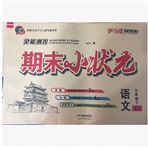题目内容
. ---Did he hear of the news that his son sacrificed in the war?
---No. It was he received the call from the army he knew it.
| A.until, that | B.not until, when | C.until, when | D.not until, that |
D
解析

 全能测控期末小状元系列答案
全能测控期末小状元系列答案In 1901, H. G. Wells, an English writer, wrote a book describing a trip to the moon. When the explorers landed on the moon, they discovered that the moon was full of underground cities.
They showed their surprise to the “moon people” they met. In turn, the “moon people” showed their surprise. “Why,” they asked, “are you traveling to outer space when you don’t even use your inner space?”
H. G. Wells could only imagine travel to the moon. In 1969, human beings did land on the moon. People today know that there are no underground cities on the moon. However, the question that the “moon people” asked is still an interesting one. A growing number of scientists are seriously thinking about it.
Underground systems are already in place. Many cities have underground car parks. In some cities, such as Tokyo, Seoul and Montreal, there are large underground shopping areas. The “Channel”, a tunnel connecting England and France, is now completed.
But what about underground cities? Japan’s Taisei Corporation is designing a network of underground systems, called “Alice Cities”. The designers imagine using surface space for public parks and using underground space for flats, offices, shopping, and so on. A solar dome would cover the whole city.
Supporters(支持者) of underground development say that building down rather than building up is a good way to use the earth’s space. The space, they say, can be used for farms, parks, gardens and wilderness. H. G. Well’s “moon people” would agree. Would you?
【小题1】The explorers in H. G. Well’s story were surprised to find that the “moon people” ______.
| A.knew so much about the earth |
| B.understood their language |
| C.lived in so many underground cities |
| D.were ahead of them in space technology |
| A.Discovering the moon’s inner space. |
| B.Using the earth’s inner space. |
| C.Meeting the “moon people” again. |
| D.Traveling to outer space. |
| A.Offices, shopping areas, power stations. |
| B.Tunnels, car parks, shopping areas. |
| C.Gardens, car parks, power stations. |
| D.Tunnels, gardens, offices. |
| A.Alice Cities—cities of the future. |
| B.Space travel with H. G. Wells. |
| C.Enjoy living underground. |
| D.Building down, not up. |